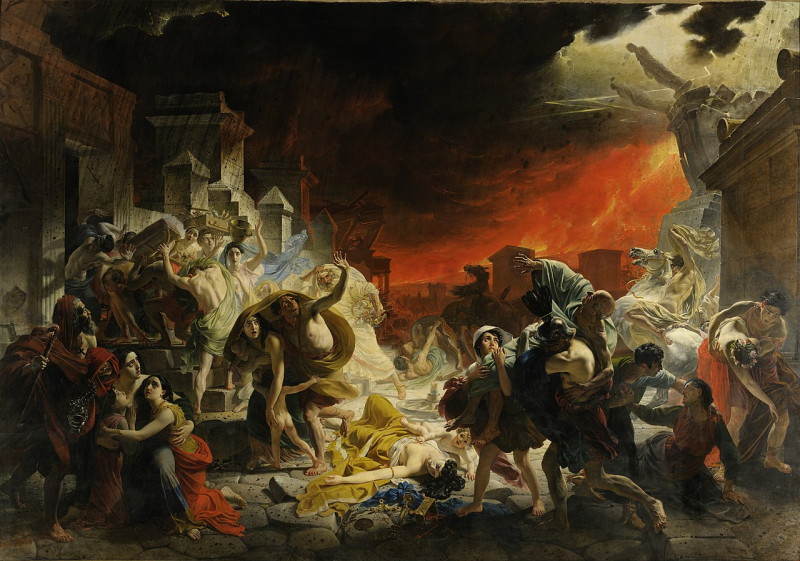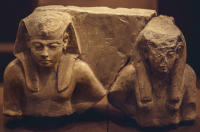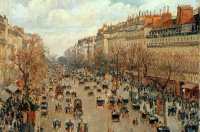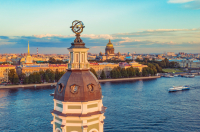The Last Day of Pompeii by Karl Bryullov, 1833
After his visit to the ancient ruins of the infamous town of Pompeii, Karl Bryullov painted his most renowned work, The Last Day of Pompeii. The painting, which took him six years to complete and required much research, became an instant success when first exhibited. Despite depicting a Classical topic, the painting has numerous elements of Romanticism, focusing heavily on the personal stories of those in the frame. Famously, the figures in the painting are drawn from the artist’s contemporaries; the master even included himself in the painting, too.
Where: Mikhailovsky Palace, room 14
The Ninth Wave by Ivan Aivazovsky, 1850
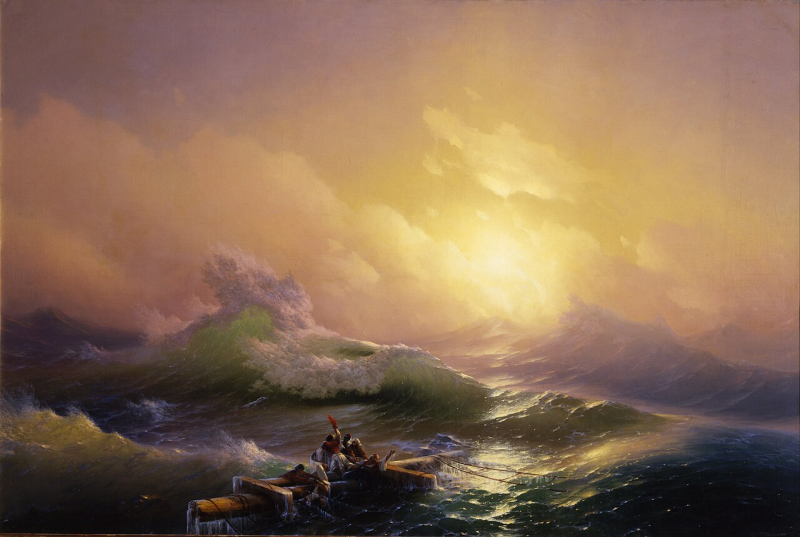
The Ninth Wave (1850) by Ivan Aivazovsky. The State Russian Museum, St. Petersburg. Credit: Google Cultural Institute / CC-PD-Mark / Wikimedia Commons
The Ninth Wave, hailed as the pinnacle of success in the artist’s Romantic era, is possibly the most well-known work of the marine painter, out of as many as 6,000 paintings he had authored throughout his life. The canvas features the approach of the ninth wave, which, as the legend has it, is the deadliest of all waves, forcing those on the boat to face the danger of nature. Metaphorically, the artwork is interpreted as a representation of undying hope. The artist, reportedly, tapped into his own memories of marine endeavors for inspiration.
Where: Mikhailovsky Palace, room 14
Barge Haulers on the Volga by Ilya Repin, 1870-1873
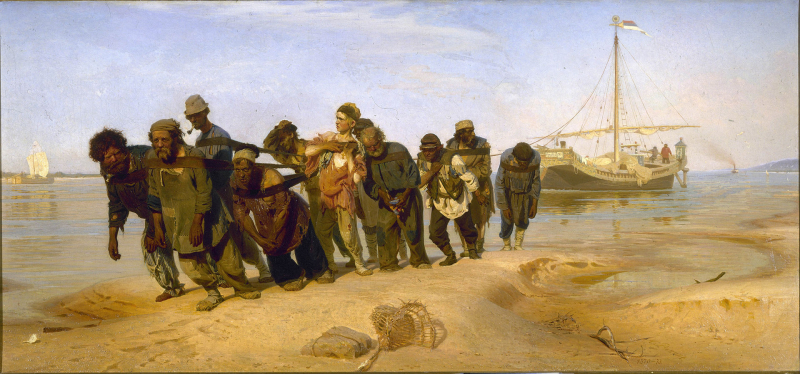
Barge Haulers on the Volga (1870-1873) by Ilya Repin. The State Russian Museum, St. Petersburg. Credit: Google Cultural Institute / CC-PD-Mark / Wikimedia Commons
Yet another painting inspired by a real-life scenario, Barge Haulers on the Volga stays true to its title, depicting 11 exhausted men breaking their backs to drag a barge against the flow of the river Volga with such mastery that they appear to be about to exit the frame. Rooted in realism, the piece caused quite a stir when first revealed for showing social inequality, breaking the traditions of academic art.
Where: Mikhailovsky Palace, room 33
Moonlit Night on the Dnieper by Arkhip Kuindzhi, 1880
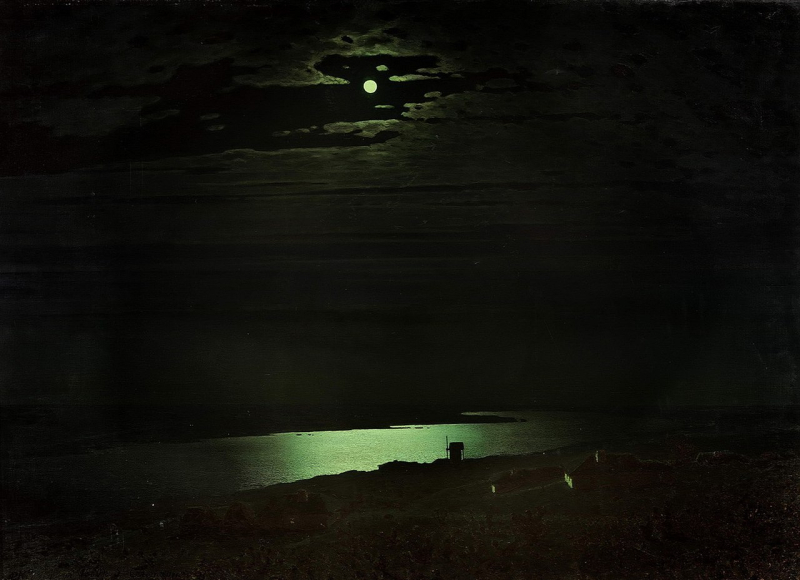
Moonlit Night on the Dnieper (1880) by Arkhip Kuindzhi. The State Russian Museum, St. Petersburg. Credit: Виртуальный Русский музей / CC-PD-Mark / Wikimedia Commons
Singing the praises of the southern landscapes, Moonlit Night on the Dnieper captivated the attention of the audience way before it was first displayed. It was presented at the first public show of a single painting in Russia. The artist positioned his work in the dark of a room with an electric light directed right towards it, so as to highlight the phosphorous-like glow of moonlight. Kuindzhi was able to achieve this effect with his brush thanks to his mastery of colors and experiments in their mixing.
Where: Mikhailovsky Palace, room 38
Knight at the Crossroads by Viktor Vasnetsov, 1882
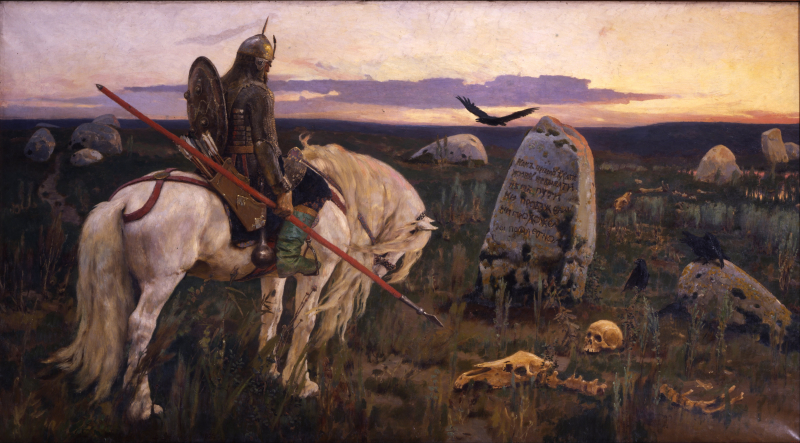
Knight at the Crossroads (1882) by Viktor Vasnetsov. The State Russian Museum, St. Petersburg. Credit: Google Cultural Institute / CC-PD-Mark / Wikimedia Commons
Viktor Vasnetsov is a noted Russian master of historical and folklore painting, with many of his works inspired by the East Slavic legends, including bylinas – autofictional works in the world of history, of sorts. One such example is Knight at the Crossroads, which laid the groundwork for the artist's series of works on the subject. It portrays Ilya Muromets, one of the three bogatyrs, mournfully inspecting a stone with engraved warnings against a somber backdrop of a gloomy sky, ominous ravens, and scattered skulls.
Where: Mikhailovsky Palace, room 28
Visit the museum’s website to learn more about the painting and take a virtual tour around its premises.
